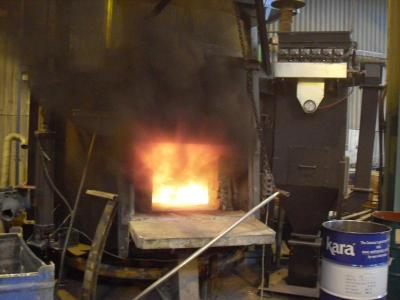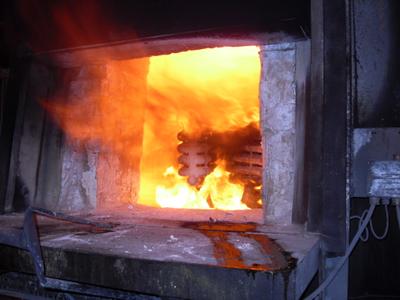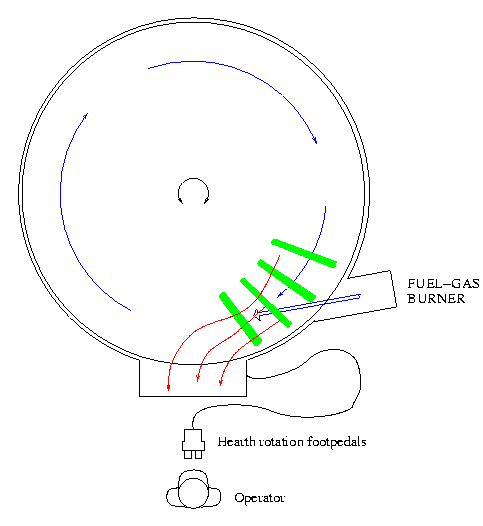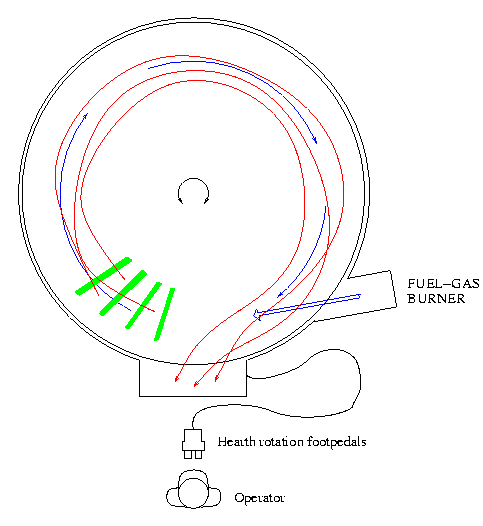

When dewaxed shells are loaded into the gas-burning rotary hearth furnace to be fired at 1050C prior to casting, a wild conflagration, duration about 10 minutes, of the type shown in following pictures and in this movie, often occurred.


The worst case of billowing thick sooty black smoke is seriously unacceptable, as the wax contains "fillers" like polystyrene giving highly noxious smoke.
Smoke abatement equipment to estimated £60000 capital cost and £20000 per year running cost in fuel-gas and maintenance looked imminently necessary.
A system-of-work was identified and adopted which eliminates smoke
emission in the first instance.
The system works by comprehending that you do not get black smoke
emission if the wax fume meets the combination of:
Explaining the solution in stages:
This is the situation as found initially - following sketch:
A
"right-handed" Operator would naturally rotate the hearth so the
shells recede to the Operator's right-hand-side, as in the sketch.
The problem is the very short path of the wax-fume from origin to
first meeting the door. Little time to burn in the furnace gives
hydrocarbon-rich emerging vapour to suffer "cold" part-combustion.

The first stage of the solution needs the Operator to rotate the hearth "leftward", exercising a choice contrary to what a right-handed Operator would naturally do.

Because the furnace atmosphere swirl is "leftward" as driven by the gas-burner, the fume has to do a long path - nearly a complete revolution of the furnace - before it meets the door. That gives temperature + time.
The next stage of the solution is that you are never trying to burn more wax than there is air available to burn it. That is, you must keep it true that there is always + oxygen.
How much more the operating crew have to do to keep this the case and avoid smoke emission depends on how much retained wax there is in the dewaxed shells
The System-of-work would ultimately limit productivity of the furnace if order-load reached a high level. There are ideas to enhance the general approach of the System-of-work with additional independent air-injectors to the furnace. The hoped-for result is larger amounts of wax could be burned, thereby releasing the restriction on how rapidly shells can be loaded into the rotary hearth furnace.
The bonus of an intense controlled wax-burn is in heating the furnace in place of mains fuel gas. If the concepts worked well with complete and clean wax fume combustion, there might be the possibility of closing the furnace door immediately on shell loading, utilising the wax as an efficient fuel plus avoiding heat-loss through an open furnace door.
Some of the Operators are Poles and of these some speak no English. English-speaking Polish colleagues can repeat in Polish what you are explaining - but to work, needed verbal explanation must be brief. Pictorial representation will convey ideas, because they must share the idea and be able to contribute their opinions and knowledge in the "acceptance" process.
A scan of my notes at the acceptance meeting is provided.